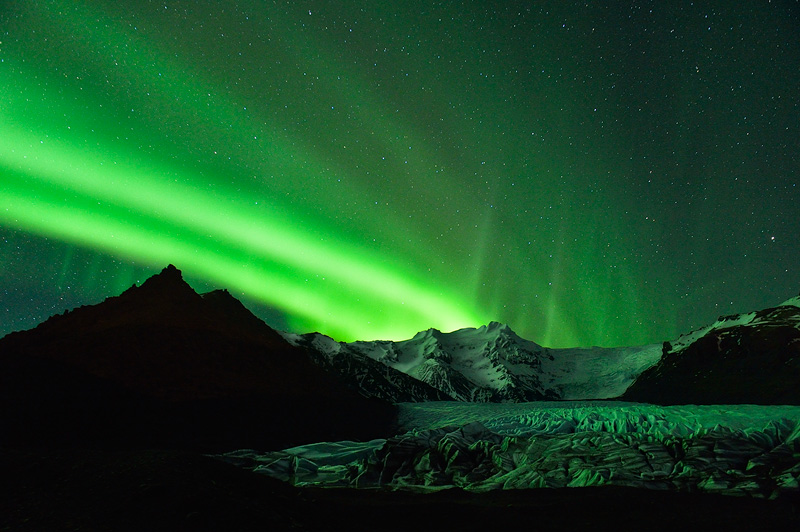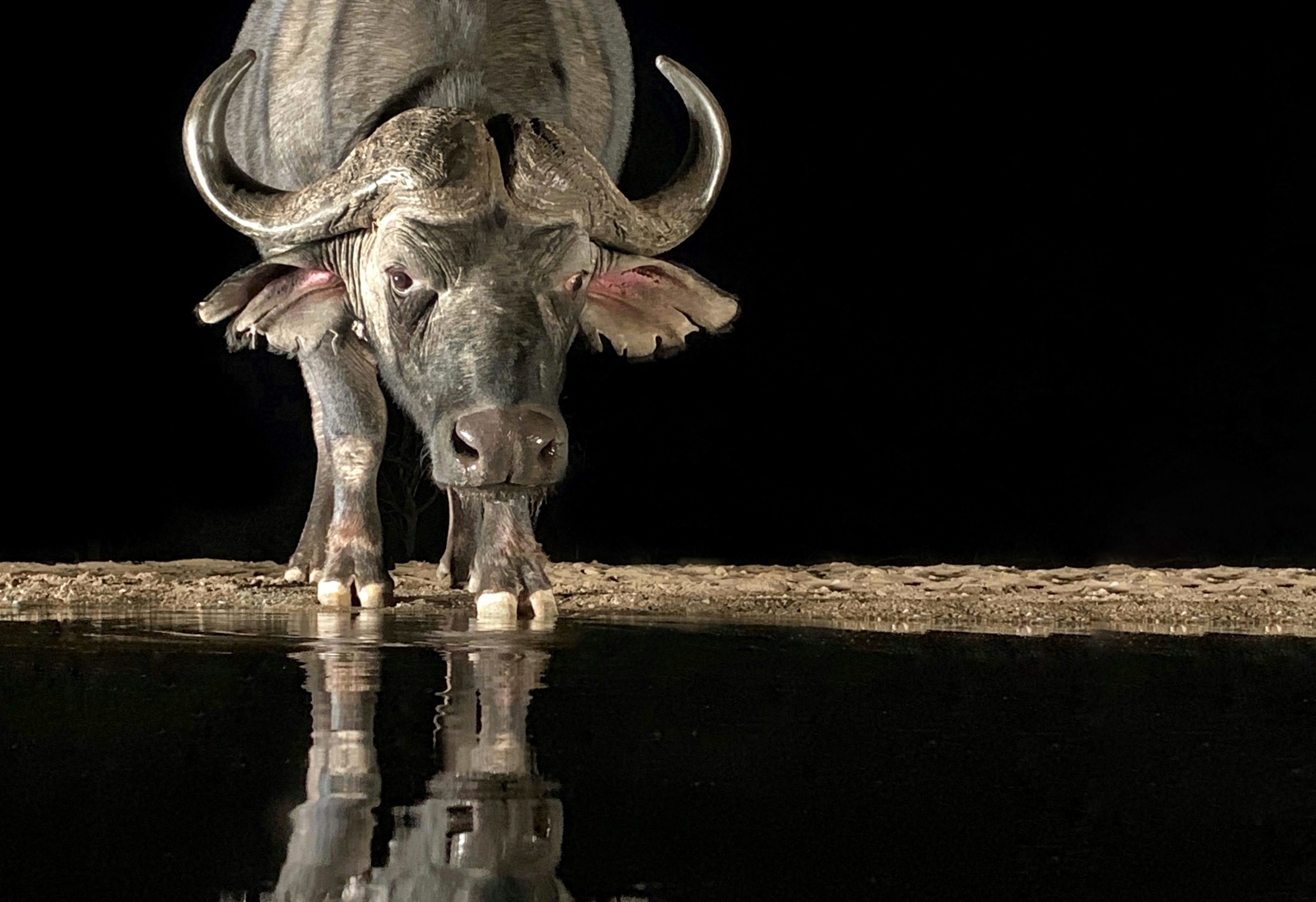Glacier lights
The sun has a heartbeat – every eleven years or so it beats. This is known as the solar cycle and is measured by the number of sunspots visible on the sun. The more sunspots, the more solar flare energy is being released into space, which means more aurora activity. Luckily, this solar cycle is predictable. After a couple of years of deep solar minimum, sunspot activity started to increase again around 2010, and “Solar Max” was predicted for 2013-2014.
Spring is aurora season. For reasons not fully understood by scientists, the weeks around the vernal equinox are prone to Northern Lights, which is why we run our Iceland tours in March.

The aurora predictions for this particular night were not that good – level 3. That’s usually not enough to make everyone run outside, but we knew that on a clear night and with a bit of patience, you can get good results. Last year we already scouted many places for possible aurora shoots, so when we decided to give it a try with our group, we knew exactly where to go. We had selected a spot on top of a small hill to get a view of a massive glacier and mountains on all sides.
Already when we were hiking up in the dark, we could see the aurora appearing ahead of us. We all set up our gear and had two full hours of good activity.
If you would like to join us on next year’s Iceland tour and learn more about landscape photography and composition, please check out the photo tours page on our website or download the brochure (PDF).


